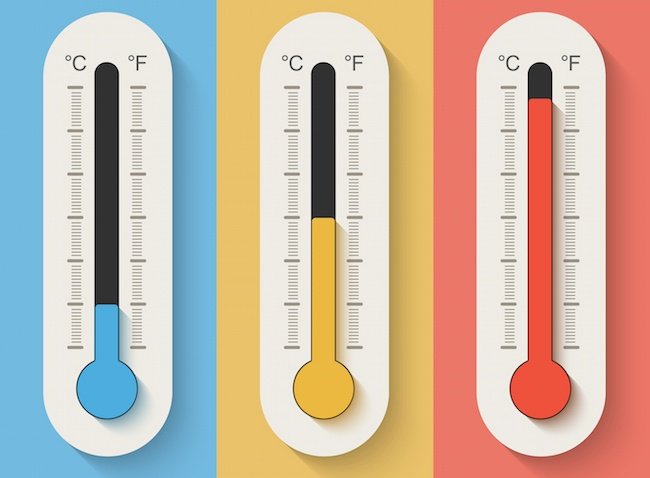5 Steps to Mitigate Overheating with Enclosure Air Conditioners

Managing enclosure heat gain needs to be a part of everyday business operations, as failure to do so may cause electrical components to overheat, resulting in equipment downtime and lost productivity. Manufacturers suggest maintaining enclosure temperature of 104°F (40°C) or less is acceptable. Ideally enclosure air temperatures should be maintained closer to 95°F (35°C) since localized temperatures surrounding the electrical components can often be higher.
Overheating of electrical components occurs due to internal heat load, environmental factors such a solar heat gain, lack of ventilation, and restricted air flow that allows hot spots to form. Enclosures are designed to house and protect electrical components, but without proper system cooling there is the risk of overheating leading to component failure.
By following these steps to proactively manage cooling with an enclosure air conditioner, high temperature problems inside electrical enclosures can be solved, increasing component life and reducing the risk equipment failure.
1. Keep Components Cool by Choosing the Correct Enclosure
The first step is to determine the degree of sealed enclosure protection required to shield the internal components from the surrounding environment. Components must be kept clean and dry and the enclosure should have the ability to prevent the ingress of air-borne oils, corrosive materials and dust. For an enclosure air conditioner to properly cool components the system must be void of air leaks.
Once the environmental conditions have been identified the required NEMA rating of the enclosure can be determined.
2. Select the Right Enclosure Size
The second step requires choosing an adequately sized enclosure that fits your application. An undersized enclosure will not allow for sufficient spacing between components resulting in possible overheating. An important part of enclosure design is following manufacturers’ specifications for minimum required component spacing. The enclosure should be large enough to house the equipment and allow for unrestricted air-flow across the panel.
3. Determine Ambient Temperature and Calculate Heat Load
Once the enclosure has been properly sized the ambient temperature range needs to be determined and the heat load needs to be calculated. An online enclosure temperature management calculator provides the most accurate calculation for heat load taking into account all component heat sources, solar heat gain and ambient temperature (which can be influenced from other nearby heat sources).
Once the values from the enclosure temperature management calculator have been obtained, the the enclosure air conditioner with the required cooling capacity can be selected.
4. Select the Right Enclosure Air Conditioner Capacity
Step four is crucial when choosing the size of the enclosure air conditioner. Choosing an undersized enclosure air conditioner will fail to adequately cool the cabinet, causing the electrical components to overheat. That said, bigger is not better when it comes to enclosure air conditioners: an oversized unit has a much higher initial investment cost, will be less efficient, and frequent on-off cycling may lead to unacceptable temperature variation.
5. Avoid Overheating With Enclosure Air Conditioner Maintenance and Remote Monitoring
The final steps to mitigate component overheating are small and simple but can make a big difference in your operation. Make sure to include routine air filter maintenance to keep the enclosure air conditioner running efficiently, ensuring ideal panel temperatures safeguarding electrical components from excess heat.
Enhancing cooling system reliability is the last step. By adding remote temperature monitoring to your enclosure air conditioner you will be alerted of any malfunction helping deter component overheating and possible failure.
Keeping Components Cool One Step at a Time
Following the above outlined steps will help mitigate overheating with an enclosure air conditioner. Choosing the correct enclosure type and size to protect components from local environmental conditions is crucial. Enclosure air conditioners offer a wide range of cooling capacities and without the proper system heat load calculations, selecting the right air conditioner could be an expensive guess leading to overheating overheated components and unplanned downtime.
If you need professional advice, technical assistance or would like to learn more about keeping your electrical components from overheating with an enclosure air conditioner, contact the sales team at Thermal Edge.

